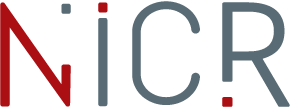One of the many requirements defined by the Ministry of Education in its Exceles call (financed from the EU Recovery Plan) is interregional collaboration, subsequently rather strictly measured by indicators. Most of these indicators are perfectly legitimate, unquestionable, and useful, despite their sometimes tediously bureaucratic system of control. And such legitimate and rational indicators is interregional collaboration.
Interregional collaboration is part of the Czech Republic’s general strategy. As such, it is also supported by separate subsidy instruments, such as the Interregional Collaboration Operational Programme, which fall under operational programmes aimed at European territorial cooperation. But even aside from the general ethos of ‘bringing together’ (meant positively, without sarcasm), NICR is a fundamentally interregional institution. It is based on a network of three hubs (Prague, Brno, and Olomouc) and has direct collaborators also in Pilsen, because the local faculty of medicine is part of the Charles University. Speaking of which, it should be noted that one of the Pilsen groups is led by a Finnish scientist, Professor Kari Hemminki, who is also part-time active in Germany. At the same time, teams in many of our laboratories also develop collaborations with teams that do not belong to the NICR. And another curious info snippet: the BIOCEV centre, which hosts several Prague teams belonging to NICR, is in fact a representative of another region, namely Central Bohemia.
Effectivity and flexibility regardless of the ‘walls’ of individual institutions
To link expertise, technologies, and individual teams within particular research programmes of the NICR, regardless of their founders or location within the Czech Republic, is without a doubt a more effective and flexible use of resources than pouring money into concrete, constructing buildings, and trying to draw scientists to it (by ‘cannibalising’ existing teams). In other words, NICR works by linking relevant renowned scientists regardless of the ‘walls’ of their home institutions.
Instead of an information board in the lobby, we thus have on our website a map of 71 laboratories with information about their mission, vision, and team. This way, we do not disrupt the integrity and structure of institutions where these groups are located. The existence of the interregional organism of NICR is thus advantageous both for our partner institutions (where we strengthen the productivity of their cancer research portfolio and overheads brought by scientists) and for the NICR, which profits from the mostly competent and helpful technical and administrative in-house support of their teams.
Connections across the whole country boost NICR visibility
Connections across the whole country of NICR has several further benefits. The NICR network is parallel with technologically defined scientific infrastructures in the national roadmap. Moreover, work with talented students from secondary schools (and not only from the large cities) is an important part of our institute’s activities aimed at training future experts in biomedicine. Our colleagues collaborate with Specialised Activities at Secondary Schools and lecture at secondary schools across the entire country. Secondary school students and their teachers then in turn visit our laboratories to see and experience ‘how science is cone’. One of the consequences of interregional collaboration is then also achievement of a ‘critical mass’ for NICR, which leads to its increased visibility to potential international scientific partners and networks. This is fully in line with our mission, since internationalisation is after all one of the phenomena included among the abovementioned indicators and it is a natural one, one we endorse and, in most teams, are also capable of supporting in a targeted manner. In fact, interregional collaboration is an indicator so natural that – although it is a parameter followed by the Ministry of Education – we, and our administrators, paradoxically tend to forget to formally list it in periodic reports to our founder.
Aleksi Šedo, NICR Director

